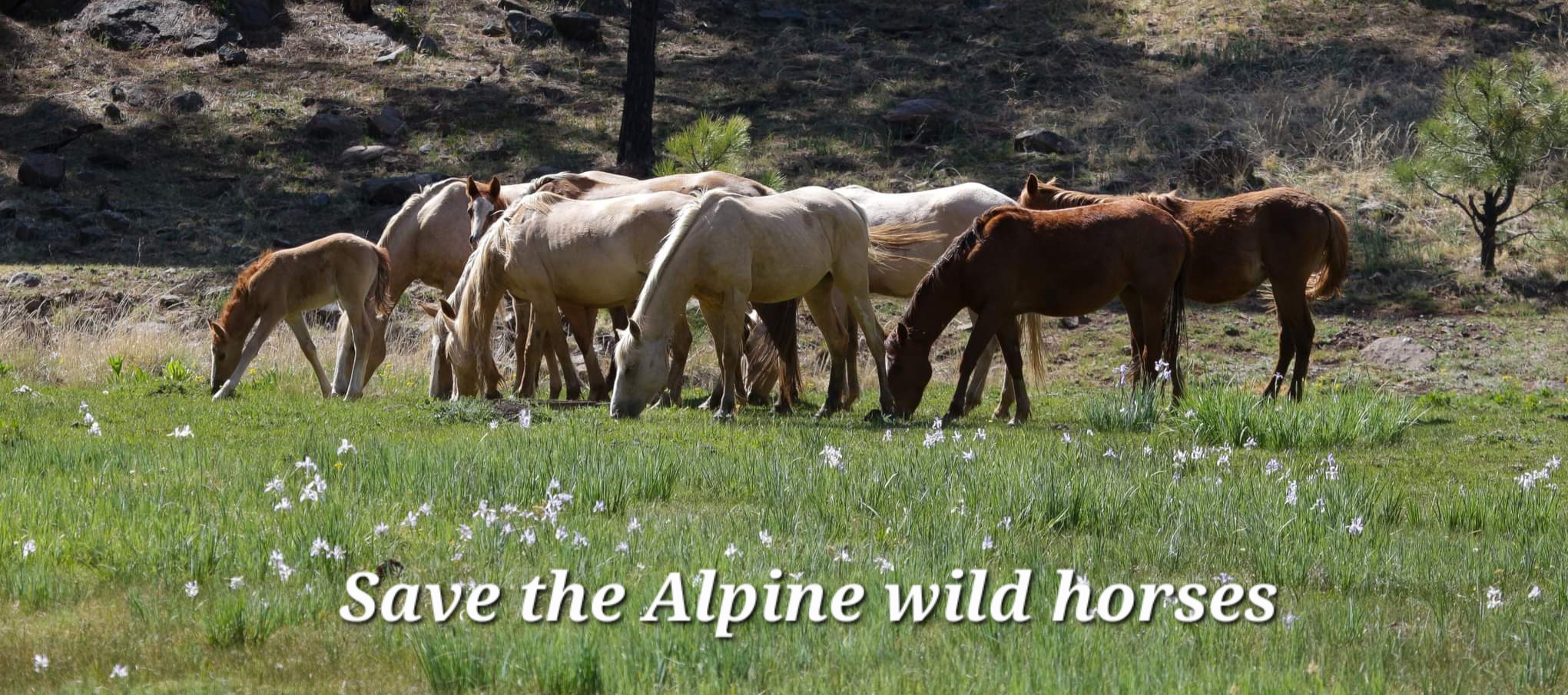
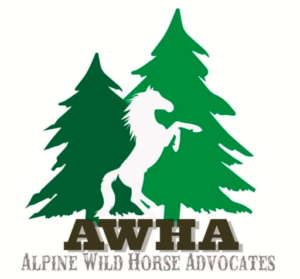 The Alpine wild horses are the majestic creatures that have roamed free in the Apache National Forest in Northern Arizona for centuries. The Apache Sitgreaves National Forest manages this two million-acre Forest (ASNF).
The Alpine wild horses are the majestic creatures that have roamed free in the Apache National Forest in Northern Arizona for centuries. The Apache Sitgreaves National Forest manages this two million-acre Forest (ASNF).
This district of the Forest Service, which falls under region 3, is inhumanely removing the beloved Alpine herd and selling them in online public auctions, through which they are ending up in slaughter for human consumption. Horse Advocates are hurt and outraged that the horses they know and love are ending up in Mexican slaughterhouses under the direction of the Forest Service through their contractor Rail Lazy H.
The ASNF has classified these horses as “unauthorized livestock,” which makes the removal “legal” by their design and, at the same time, makes humane management “illegal.”
Between our Arizona State archives, the Library of Congress historical articles, and Arizona State historian Marshall Trimble, enough historical evidence exists to state these horses are the living remnants of our earliest Arizona history. The same area where they live is called the Coronado Trail, which Fransisco Vasquez de Coronado blazed in 1540 and left horses behind. The Forest Service, however, is trying to deny that entire history by saying they were not there in 1971 when the Wild Free-roaming horse and burro Act passed.
We believe this was a purposeful omission.
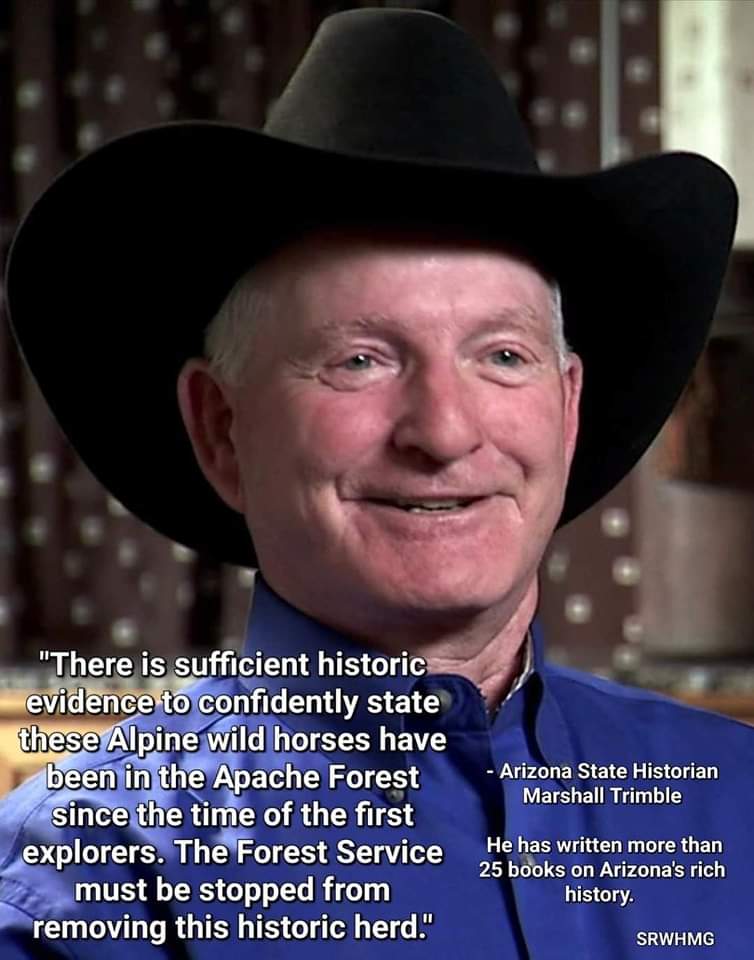
More than 160 of these beautiful horses have already been removed and sold without limitation on slaughter. While we have worked very hard with sanctuaries and good people to find over 100 good homes, there is a limit to what we can do as citizens.
The Apache Sitgreaves Forest Service and its contractor Rail Lazy H are not only aware of this direct connection to the slaughter pipeline; they have designed the removal program this way. This behavior of our federal government is an outrage. It is not much different than how they were trying to exterminate these horses in 1926 by offering them five and a half cents per pound at the railroads. (Historic article)
We, the Alpine Wild Horse Advocates (AWHA), are a group of locals living in our beautiful small community of Alpine, where fewer than 200 people live year-round. We have loved these horses for a long time, and they are a vital recreational and tourism resource for our small community. We will continue to fight for them. We are working with the Salt River Wild Horse Management Group and learned documentation and humane management protocols. Together, we have documented almost 400 Alpine wild horses in this spectacularly beautiful high-elevation forest.
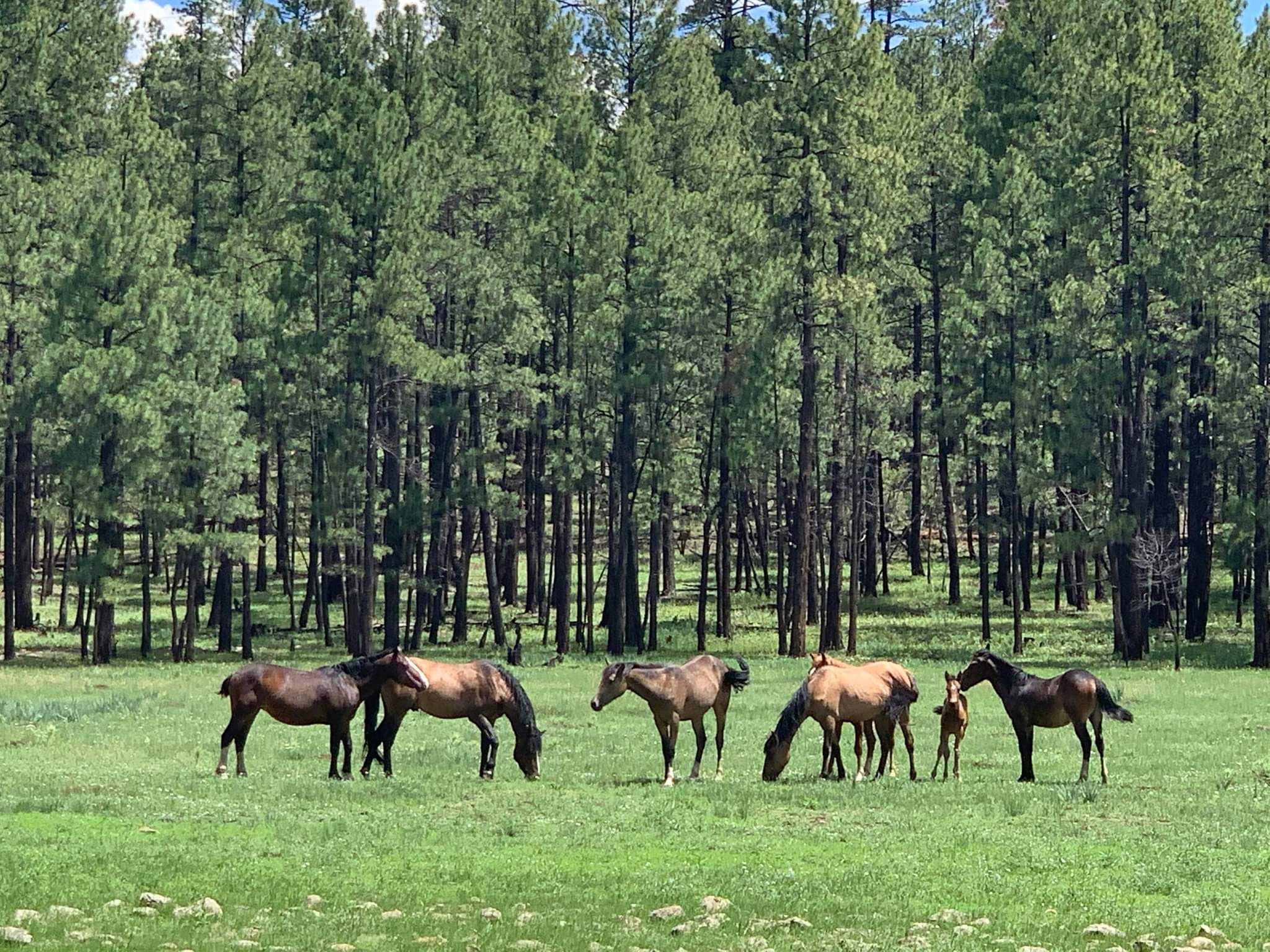
SRWHMG has offered humane and cost-effective solutions to the Apache Sitgreaves National Forest (ASNF) during several official meetings with Forest Supervisor Judith Palmer and Deputy Forest Supervisor Ericka Luna. However, there was simply no interest in humane methods. The ASNF in the news said they were looking for humane solutions, but that was a lie. Instead, they are spending $1 million of your tax dollars to eradicate this herd from the wild and erase them from our Arizona historical memory.
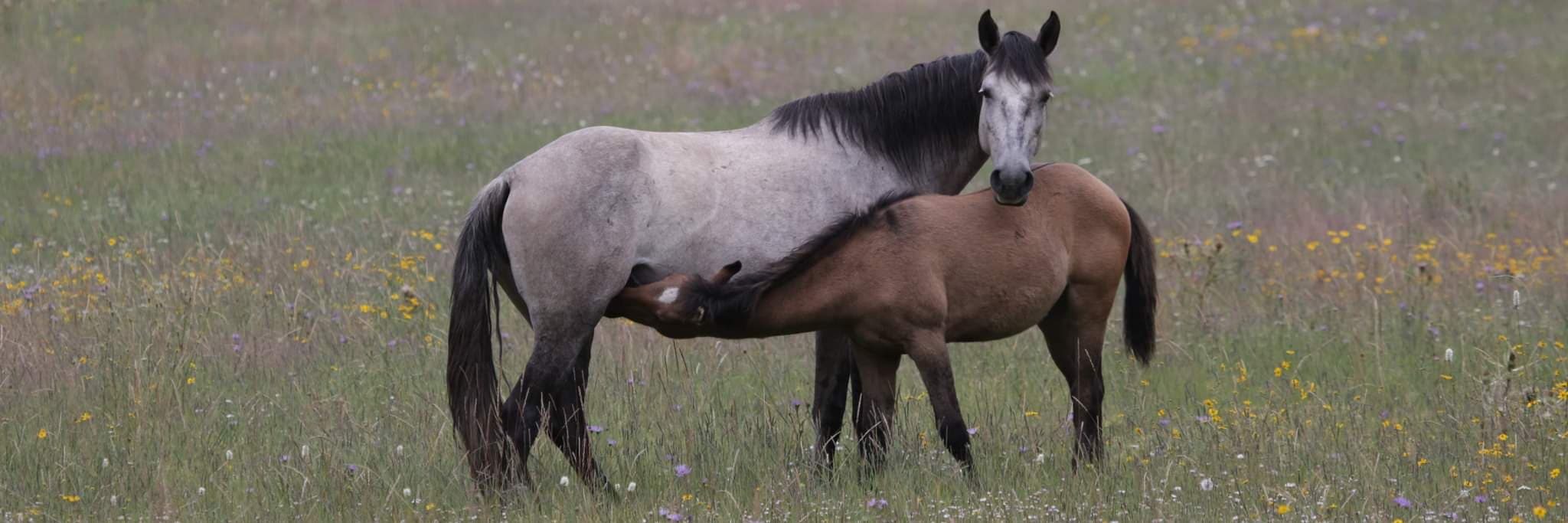
Our beautiful Alpine wild horses peacefully share over 500,000 acres of Apache Forest with over 7,000 elk, thousands of deer, bighorn sheep, and pronghorn antelope. In addition to the numerous wildlife grazers, 1,000 cattle get released every spring in the same areas where the horses live. They can share resources peacefully as they have for all these years, but suddenly there is a rush to eradicate the herd of Alpine wild horses.
The cattle grazing interest, hunting interests, and feigned environmental concerns are at the root of the propaganda and attacks towards these innocent horses. The horses are the chosen scapegoats for all alleged ecological damage. However, out of the 10,000 grazers in this forest, the horses represent only 4 percent, plus they are non-ruminants who do far less damage to the environment than cattle, which are ruminants.
Half of the 400 horses are already gone, continued removals are still in progress, and even for Christmas, they have yet to get a reprieve. The current auction has 30 Alpine wild horses in it! We need a Christmas miracle!
In addition to this well-planned extermination, in October of 2022, we found dozens of Alpine wild horses shot dead in one massive massacre by unknown shooters. We found and documented 43 bodies, and 11 more are still missing. The entire families of our beautiful wild horses lay dead next to each other, shot in the cruelest of ways. Many horses shot survived for a couple of days before succumbing to their horrific bullet wounds. Numerous young orphan foals were left alone in the forest because the rest of their family was dead.
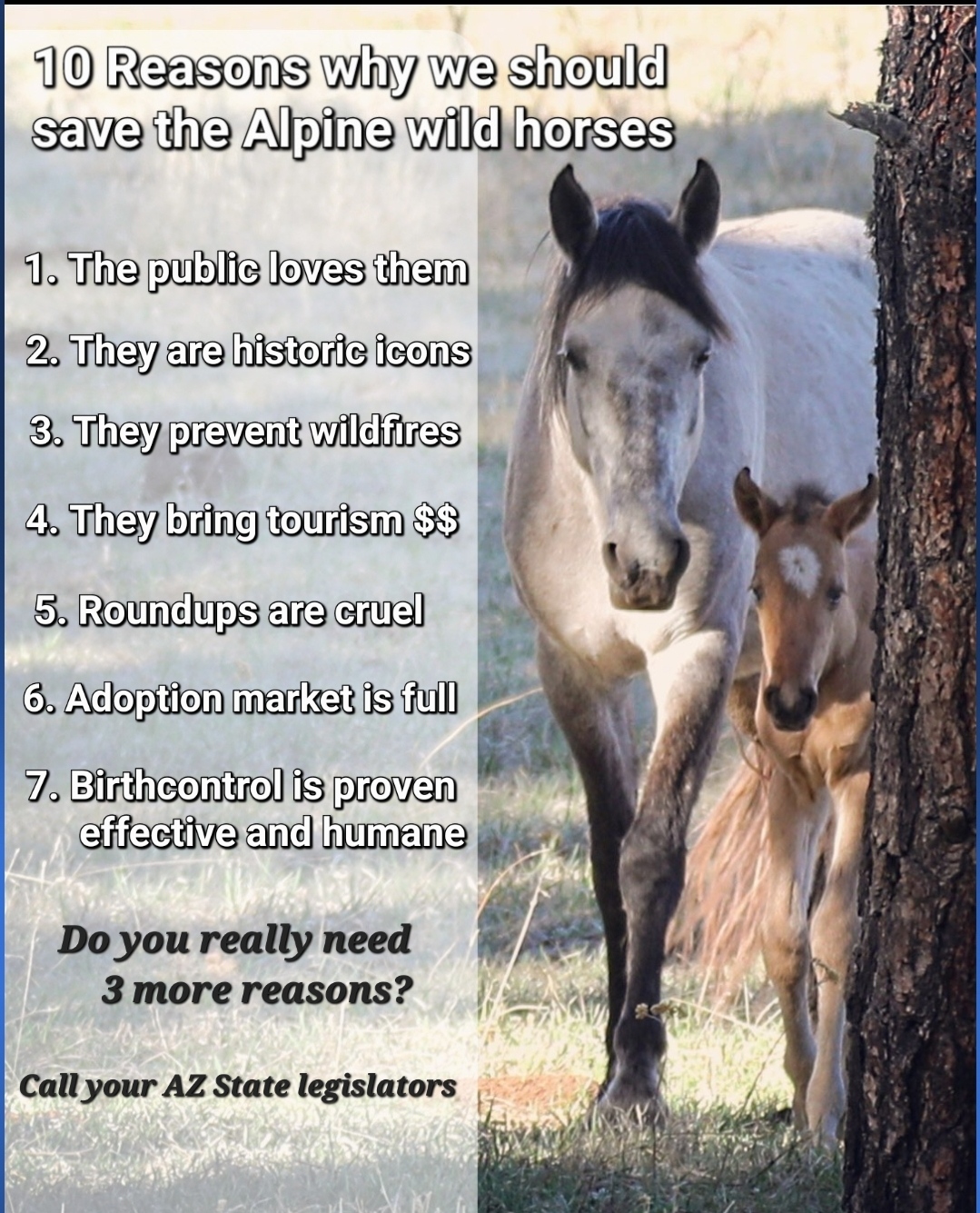
In addition to this well-planned extermination, in October of 2022, we found dozens of Alpine wild horses shot dead in one massive massacre by unknown shooters. We found and documented 43 bodies, and 11 more are still missing. The entire families of our beautiful wild horses lay dead next to each other, shot in the cruelest of ways. Many horses shot survived for a couple of days before succumbing to their horrific bullet wounds. Numerous young orphan foals were left alone in the forest because the rest of their family was dead.
We published that the orphans were out there on their own, and we asked for permission to rescue them. The Apache Sitgreaves Forest Service denied even that. They then started burying the bodies in mass graves without notifying us that they had found other bodies. We often could not identify horses or take DNA because the Forest Service had buried them before we arrived.
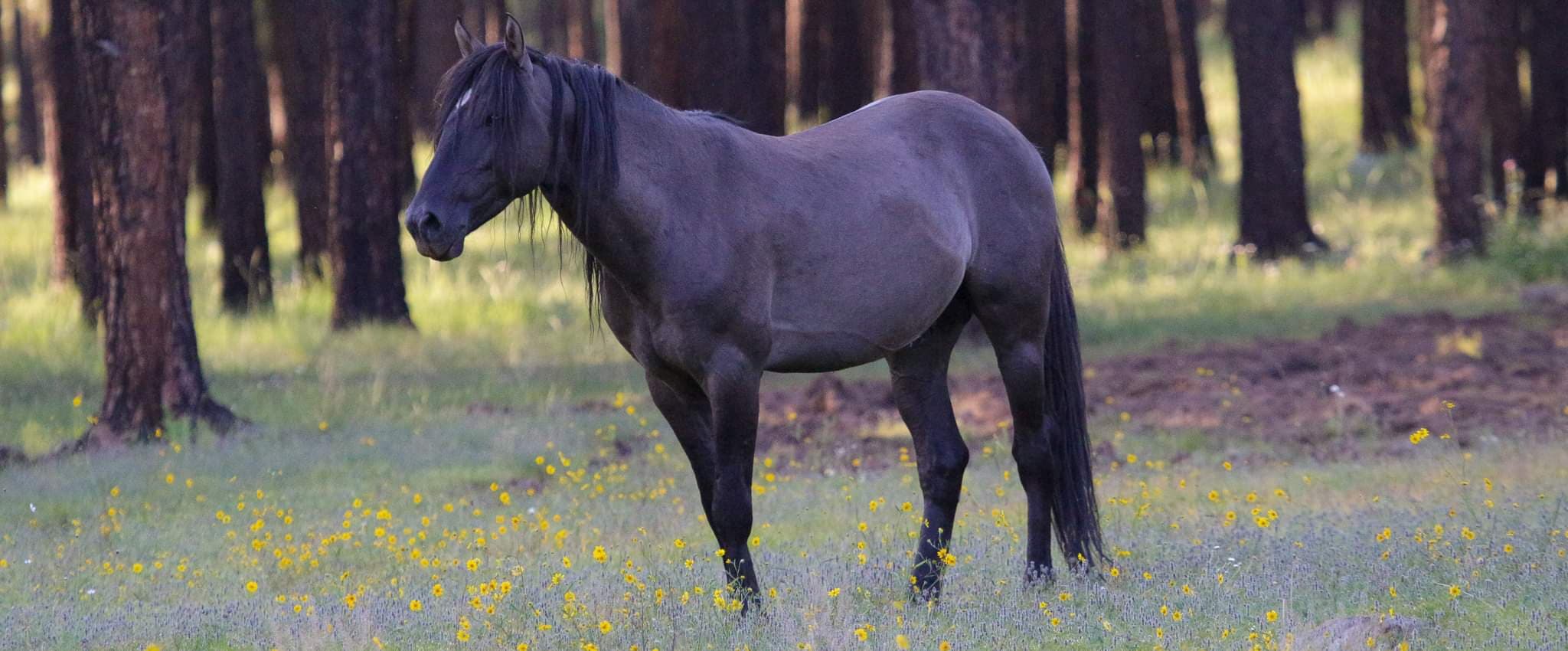
The Forest Service still has not admitted 43 horse carcasses found shot. There have been no updates from the ASNF on investigating these ruthless killings.
All of our evidence collected by AWHA and SRWHMG appears on a Facebook page called: Evidence page for the Alpine wild horse massacre. Please be warned that it is highly graphic.
The roundups continued throughout this horrible killing saga by the contractor for the Forest Service, Rail Lazy H.
AWHA and SRWHMG were the only organizations present at the first Alpine wild horse auction to ensure we bid against the suspicious buyer who indiscriminately bid on many stallions.
Since then, we have been working hard at the many online auctions to coordinate good homes and forming a coalition named #Alpinewildhorsearmy. This collaborative outreach and fundraising program has placed 118 Alpine wild horses in good homes. It is an outstanding achievement. However, there is a limit to what we can accomplish as citizens.
There are better ways.
Today, the public loves and cherishes wild horses and wants to see them preserved and humanely managed. There is a business model for humane horse management.
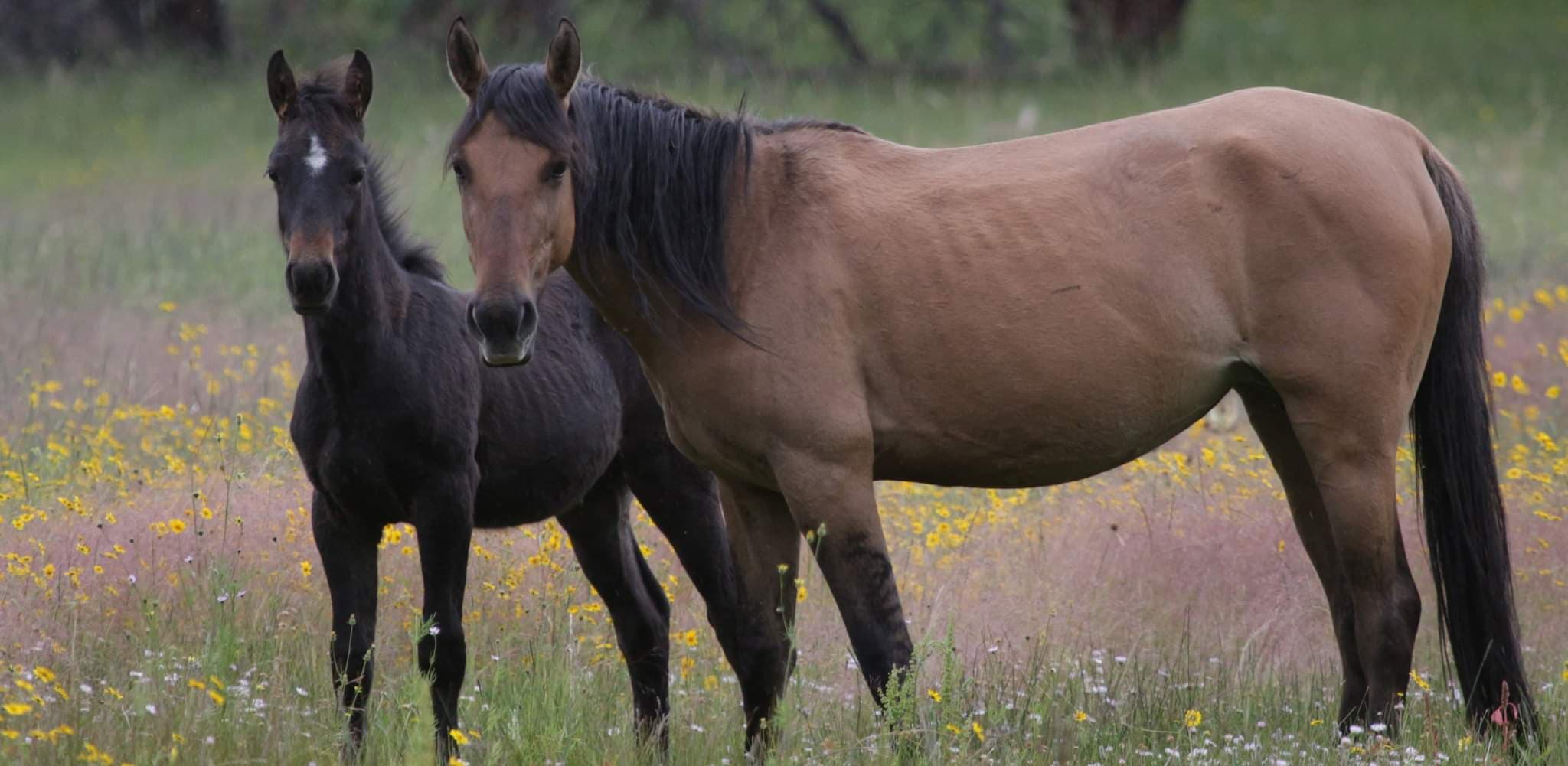
Instead of letting the herd population grow yearly, which creates an endless cycle of cruel and expensive roundups, we can apply humane fertility control in the field. The Salt River Wild Horse Management Group has proven the method to work with 99 percent efficacy.
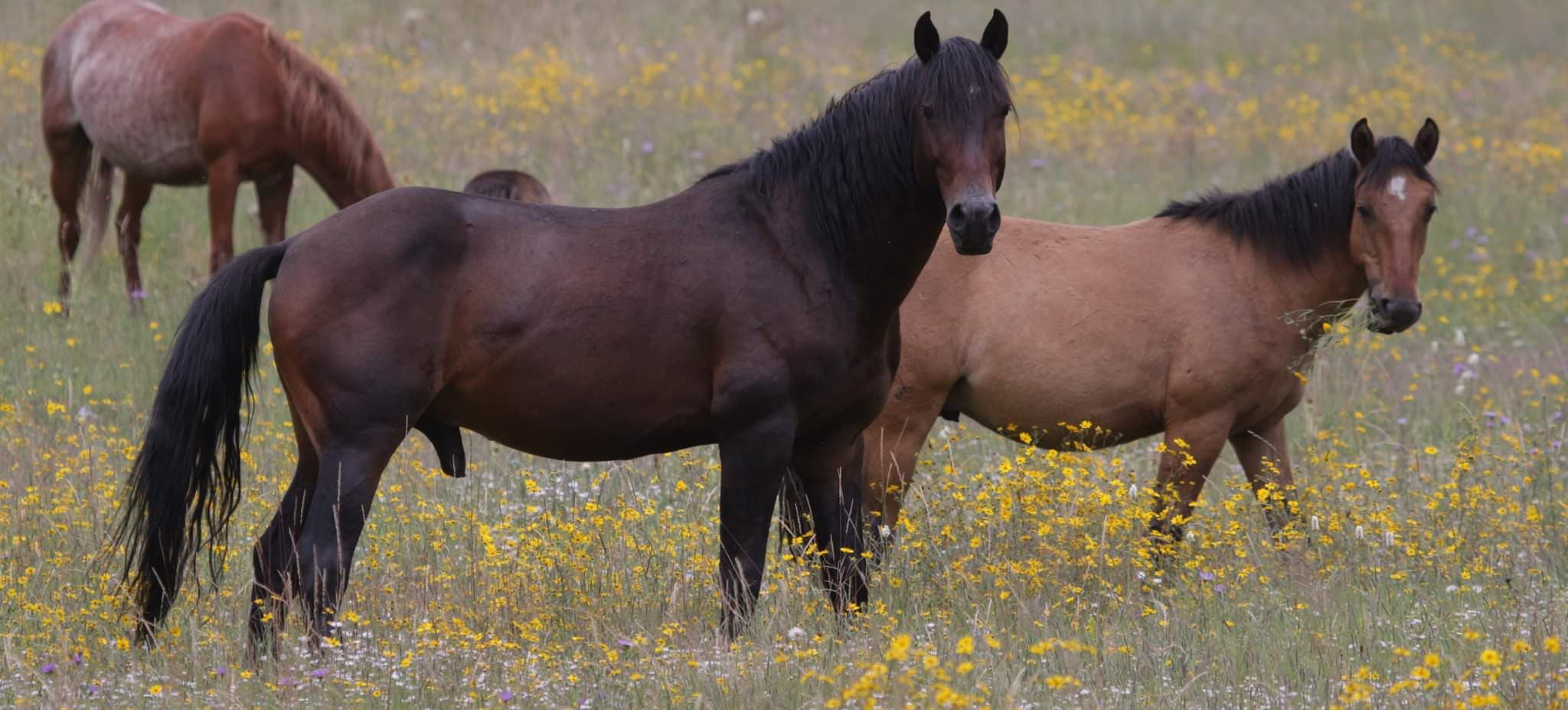
With just one foal this year in the Salt River herd of 400 horses, no one doubts it anymore. With a negative growth rate, a population will reduce itself through the natural death rate over time without a single removal. Managing wild horses in their own habitat is more fiscally responsible and humane. The fertility control is also reversible, so the program can adjust according to the desired end number. Ideally, the herds should be kept viable into the future so that our grandchildren can still enjoy wild horses the way we can today.
These are our public lands. They have been set aside for all Americans, and the public is the largest stakeholder. However, as public servants, the Forest Service is doing an abysmal job of listening to the horse-loving public. They are 100 percent catering to the cattle and the hunting industries, who now have found an ally in the Center for Biological Diversity. (CBD) We believe that CBD members and monthly donors would have differing views on their targeting of wild horses and failure to sue over a large amount of cattle grazing. Their membership is completely unaware as they make these deals behind closed doors.
Instead of balancing the different stakeholders of our public lands fairly, the Forest Service is making a mockery of the Wild Free-roaming Horse and Burro Act, which passed unanimously in Congress in 1971 to protect historic wild horses such as these.
It truly is an abomination of historic proportions. All we can do now, as wild horse protection organizations, is ask for help from across the world from anyone and everyone.
YOU can be a voice for these wild horses. The public cannot accept the unacceptable. It is not who we are as Americans.
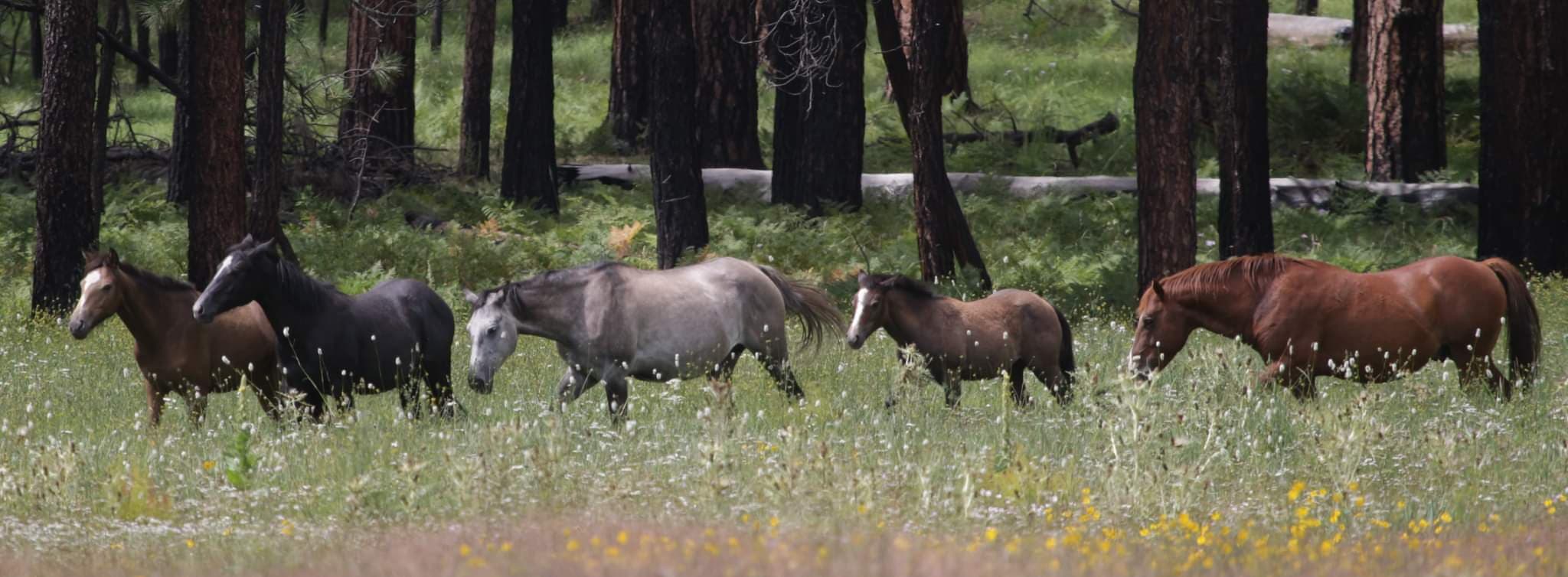
Heres how you can help:
With more monthly supporters, we can save more horses.
SIGN OUR PETITION
Alpine Wild Horse Petition
176 Signatures in Support!Please help us find good homes and sanctuaries and let us know if you have any connections: hotline 480 868 9301
We need phone calls to the following politicians:
Apache Sitgreaves Forest Service:
Jeffrey Todd PIO
(928) 245-3058
General office (928) 333-4301
(928) 333 6200
(928) 333 6280
Senator Mark Kelly: 602-671-7901 / 202 224 2235 Tucson Office: 520-475-5177
Senator Kyrsten Sinema: 602-598-7327 / 202-224-4521
(202) 224-3121 Capitol switchboard, you can reach any representative this way by naming your state and town.
Scheduler for Governor Doug Ducey:
602 542 1315
Find your AZ State representative
https://www.azleg.gov/findmylegislator/
